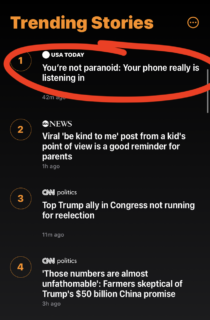I haven’t watched much at all of Apple TV+’s content, so this isn’t about whether their shows are good or not. Hell, they’re winning Emmys after all.
One thing I used to love about the Roku is that it had no incentive to make you watch one thing over another. There was no “Roku store,” so its makers weren’t motivated to put paid content front-and-center in the UI.
I gave that up once I switched to Apple TV, but I knew that, although Apple was incentivized to encourage me to watch things that I could buy or rent through them, at least it wasn’t directing me toward specific things for that reason; Apple doesn’t care whether I rent Barton Fink or Transformers, as long as I rent it from Apple (and their library is extensive).
I love the TV app for its “Up Next” section, reminding me what I want to watch and where I left off. I even like the remaining rows, highlighting content that is either being talked about (recent award winners, for instance, or big shows that are ending soon), or that is positively reviewed, or that is similar to things I’ve expressed interest in in the past. With so much to watch these days, it’s nice to have different ways for content to be surfaced.
On the other hand are Amazon’s and Netflix’s UIs, which lately seem to almost exclusively show you content produced by them, to encourage you to stay in their ecosystems. The “home page” of the Netflix app has got to be one of the most valuable advertising spaces on earth, and they take advantage of that. (See: Birdbox.)
But unfortunately what has tainted the Amazon and Netflix UIs is now a problem on Apple TV, for two reasons: Apple TV Channels and Apple TV+.
Because Apple TV Channels is limited to a small handful of networks — CBS, AMC, HBO, etc. — Apple is strongly incentivized to promote shows from those networks to encourage me to subscribe to them through Apple. And with original content being produced for Apple TV+, they’re also incentivized to recommend their own shows to me, sometimes with an entire row of content in the UI.
This destroys what trust I once had in the content curation. It would be naive to think the recommendations weren’t at all previously motivated by sales, but now when I see an Apple TV+ or CBS show highlighted, I know it’s effectively no different from an ad. They would recommend “The Morning Show” to me whether or not it was good.
I almost wish they had an “editorial department” who curated the contents of the TV app and were not beholden to the other teams at Apple whatsoever.
